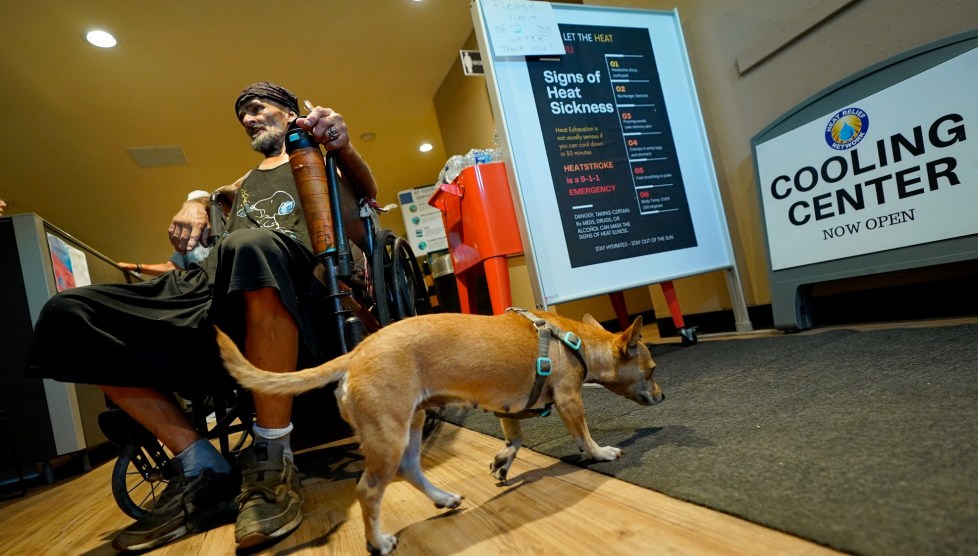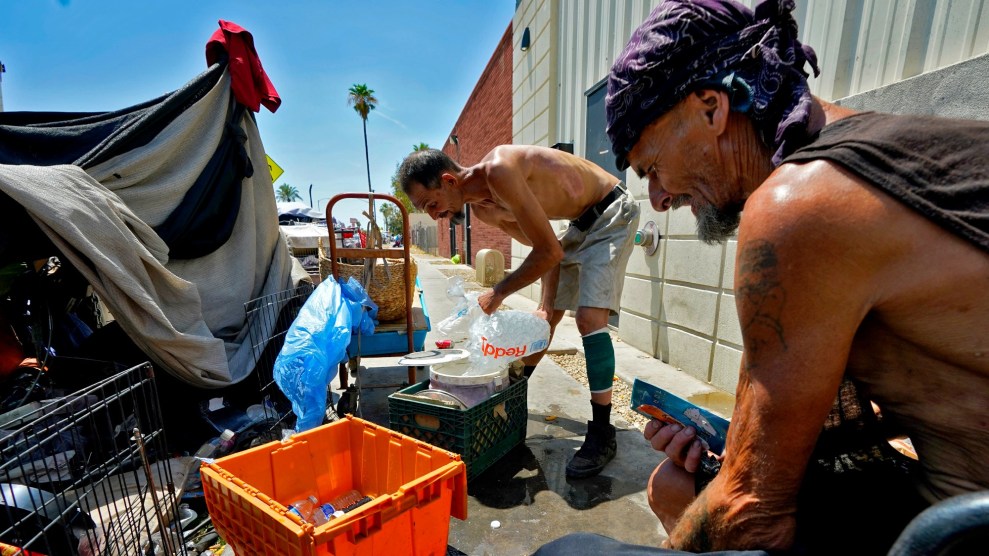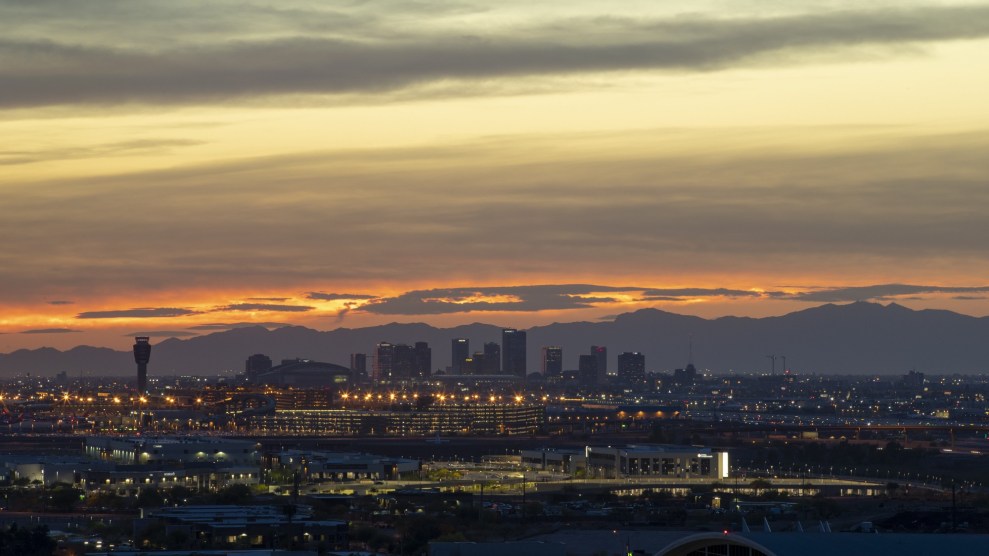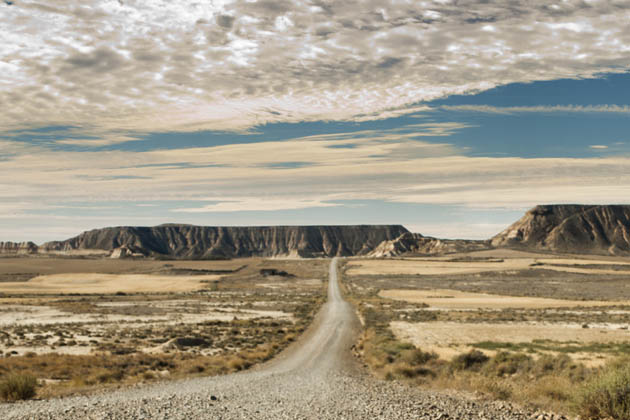
Matt York/ AP
This story was originally published by the Guardian and is reproduced here as part of the Climate Desk collaboration.
The heat expert leading efforts to make America’s hottest city more bearable insists that Phoenix could eventually eradicate heat deaths—despite July’s record-breaking death toll.
As many as 300 people may have died during the hottest ever month on record as the temperature in Phoenix topped 110F (43C) for 31 consecutive days. Heat deaths in the city have more than quadrupled in the past decade, and 2023 is on track to be another record-breaking year as Phoenix braces itself for the next spell of 110F-plus temperatures forecast to hit by Monday. Despite this, David Hondula, director of the city’s heat response and mitigation team, insists that every heat death can be prevented.
“We can get to zero deaths with the right resources…obviously no city yet anywhere in the world has yet demonstrated what the right mix of resources looks like for zero heat-related deaths, but [we’re] at the forefront of pursuing them,” Hondula said.
Phoenix, the capital of Arizona and America’s fifth-largest city with 1.6 million people, is accustomed to a hot desert climate, but temperatures are rising due to global heating—made worse by decades of unchecked urban development that created a sprawling heat island.
Hondula was appointed as the Phoenix heat tsar in the fall of 2021 to coordinate the city’s efforts to mitigate and adapt to the extreme heat that is killing and injuring more and more people every year.
July was the hottest ever month globally; Phoenix, meanwhile, had the hottest month ever recorded in a US city. Temperatures hit 115F on 17 days, breaking the previous record of six days set in 2020, according to the National Weather Service in Phoenix.
So far this year, 345 suspected heat deaths are under investigation by the Maricopa County medical examiner—a 20% increase compared to the same period last year—which itself was the worst year on record. Overall, 911 calls for heat-related emergencies are up 30% so far this year, but last month paramedic call-outs doubled and hospitals reporting a surge in contact burns requiring specialist treatment.
July’s prolonged extreme heatwave would have been “virtually impossible” without the climate crisis, and climate scientists warn that failing to stop burning fossil fuels will make such hot—or even hotter— spells increasingly likely. According to Andrew Pershing, vice-president for science at Climate Central, the climate signal was strongest at night, as the temperature failed to drop below 90F for 16 consecutive days – including one night when the low was 97F.
The climate crisis is making the American southwest increasingly inhospitable but Hondula says that it is possible to make the city—and region—more livable.
“There is no reason that the Phoenix of the future can’t be more comfortable for everyone, even if the temperature increases. I’m thinking about outdoors, access to shade, and about people’s experiences indoors—which for many in the population accounts for a majority of their time.”
Hondula’s team is leading the city’s urban forestry and built shade program, as well as coordinating outreach efforts with a growing bank of volunteers to get the word out about the network of cooling centers. The team has expanded to six full-time staff, and funding for the tree shade program is about to double.
But, reducing heat-related illness and deaths—and making the city more comfortable for all its residents—is way beyond the scope of a single team or agency. Keeping people safe will require more affordable housing and temporary shelters, better addiction services, and workplace protections to limit heat exposure, as well as financial aid for those struggling to afford to keep their homes cool.
“It’s not just that the city has never had a heat office. The city has never had a comprehensive coordinated response to heat, and I am increasingly recognizing that this needs to be nurtured and worked on. Simply having the programs that the heat office leads can only be part of the portfolio. We need to be the drivers of a change in approach and tactic across the whole organization. It’s really through the big departments [health, housing, transit] with the big budgets, that we’ll be able to accelerate impact at scale.”
As heat deaths have risen over the past, so has drug use. In 2022, 54% of heat deaths involved drugs compared to 11% a decade ago.
Heat deaths are most common among people experiencing homelessness, and last year accounted for 56% of the death toll compared to 18% in 2012. Four out of five deaths occurred outdoors last year. The unsheltered population is rising, and despite an increase in shelters, thousands of people are sleeping in tents, shop doorways, parks, and parking lots where the ambient temperature is much much higher than the record-breaking air temps—especially at night when winds are weak, and the extra heat absorbed by the asphalt and concrete structures during the day is re-radiated into the atmosphere.
“The multifaceted nature of the challenge for the unsheltered community remains at the top of mind. It’s not like there’s one singular answer for all the different circumstances that folks are in…it is challenging,” said Hondula.
For years, the mainstay of the city’s heat relief response has been a network of city and volunteer-run cooling centers—air-conditioned halls, libraries, and other facilities, which are popular though there is little empirical evidence of their impact.
Most operate during office hours, none are open overnight, and some exclude people with pets or luggage or those who can’t keep awake—which are often signs someone is homeless. Last month, the city deployed a cooling bus to the downtown area where many of the unsheltered people are concentrated, as part of the emergency response to the unprecedented heat—which activists have criticized as inadequate.
Hundreds of people have used the cooling bus, but the death toll continues to rise—and ultimately reducing deaths is what the heat team will be judged on. Hondula says he is both “disappointed” and “motivated” by the deaths, and that it’s too soon to know which services and programs are effective— and have perhaps prevented some deaths and illnesses.
“Clearly, if you’re just looking out the door, there are a lot of people without regular access to shelter in a very dangerously hot environment. So the public health impact [the deaths and illness] can’t be a total surprise. We are not close to the end vision of where we would be for a truly coordinated and comprehensive response program.”
“A frustrating part of the experience so far is that we haven’t really cracked the nut on evaluation…I’m not in a position yet to be able to say the 1,002 volunteer hours that have gone into outreach so far this year have translated into fewer deaths … but we see the individual examples, we recollect the anecdotes but how to compile them all together, remains a little bit elusive,” he added.
The hotter nights are particularly alarming for public health experts because heat is cumulative, and the body cannot start to properly recover until the temperature drops below 80F.
Yet 80% of 911 heat-related calls are made between 9 a.m. to 6 p.m. The team is undertaking case analysis to figure out whether there are simply more heat emergencies or Phoenicians are better at identifying and calling for help for heat stroke—and what role hot nights contribute to daytime emergencies.
“Yes, there is the [heat response] plan but we have a lot of work to do in building out the tactical operational details so we do a better job of matching programs and services to what the need is in the community…clearly, the city, county, state, and region are all not fully effective yet in meeting that need.”












